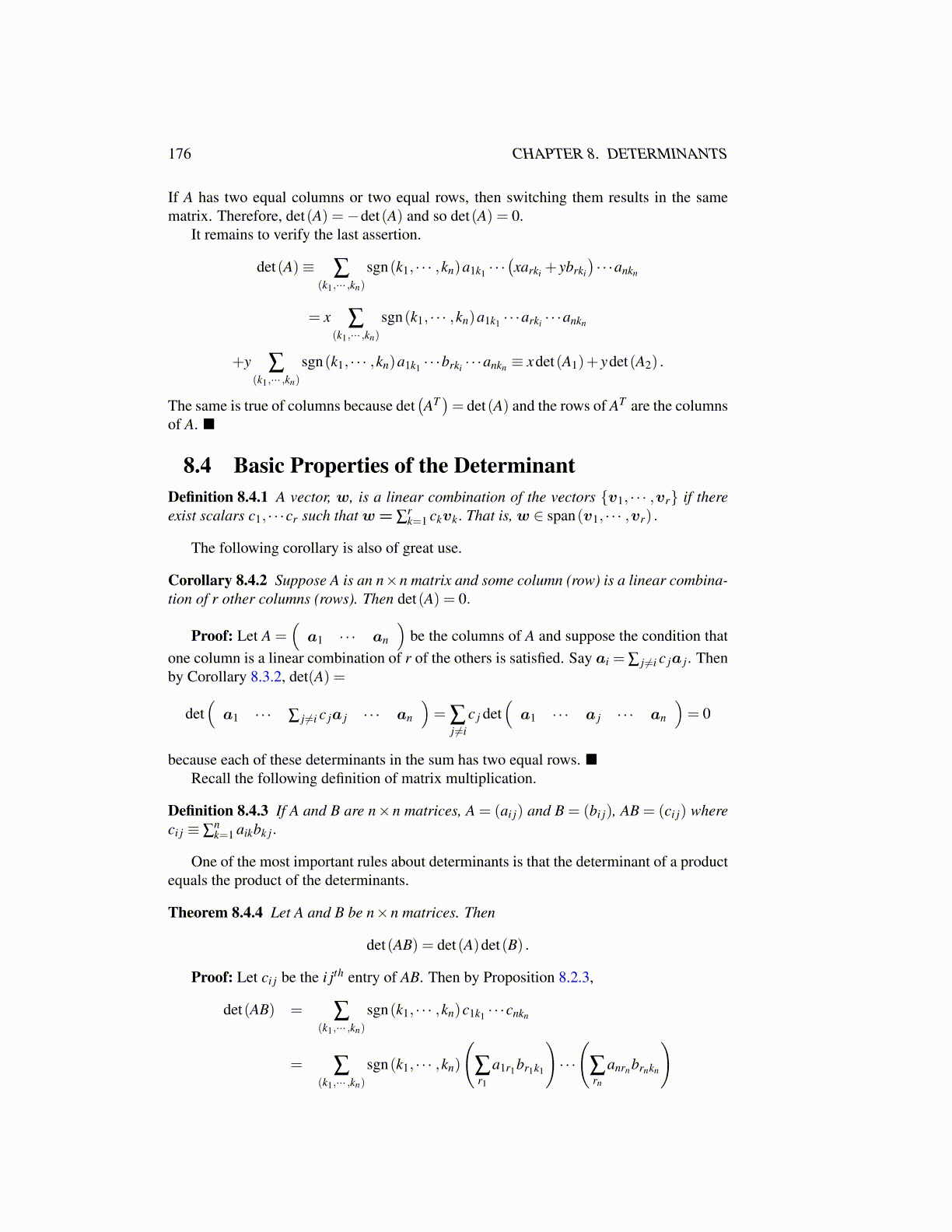
176 CHAPTER 8. DETERMINANTS
If A has two equal columns or two equal rows, then switching them results in the samematrix. Therefore, det(A) =−det(A) and so det(A) = 0.
It remains to verify the last assertion.
det(A)≡ ∑(k1,··· ,kn)
sgn(k1, · · · ,kn)a1k1 · · ·(xarki + ybrki
)· · ·ankn
= x ∑(k1,··· ,kn)
sgn(k1, · · · ,kn)a1k1 · · ·arki · · ·ankn
+y ∑(k1,··· ,kn)
sgn(k1, · · · ,kn)a1k1 · · ·brki · · ·ankn ≡ xdet(A1)+ ydet(A2) .
The same is true of columns because det(AT)= det(A) and the rows of AT are the columns
of A. ■
8.4 Basic Properties of the DeterminantDefinition 8.4.1 A vector, w, is a linear combination of the vectors {v1, · · · ,vr} if thereexist scalars c1, · · ·cr such that w = ∑
rk=1 ckvk. That is, w ∈ span(v1, · · · ,vr) .
The following corollary is also of great use.
Corollary 8.4.2 Suppose A is an n×n matrix and some column (row) is a linear combina-tion of r other columns (rows). Then det(A) = 0.
Proof: Let A =(
a1 · · · an
)be the columns of A and suppose the condition that
one column is a linear combination of r of the others is satisfied. Say ai = ∑ j ̸=i c ja j. Thenby Corollary 8.3.2, det(A) =
det(
a1 · · · ∑ j ̸=i c ja j · · · an
)= ∑
j ̸=ic j det
(a1 · · · a j · · · an
)= 0
because each of these determinants in the sum has two equal rows. ■Recall the following definition of matrix multiplication.
Definition 8.4.3 If A and B are n×n matrices, A = (ai j) and B = (bi j), AB = (ci j) whereci j ≡ ∑
nk=1 aikbk j.
One of the most important rules about determinants is that the determinant of a productequals the product of the determinants.
Theorem 8.4.4 Let A and B be n×n matrices. Then
det(AB) = det(A)det(B) .
Proof: Let ci j be the i jth entry of AB. Then by Proposition 8.2.3,
det(AB) = ∑(k1,··· ,kn)
sgn(k1, · · · ,kn)c1k1 · · ·cnkn
= ∑(k1,··· ,kn)
sgn(k1, · · · ,kn)
(∑r1
a1r1br1k1
)· · ·
(∑rn
anrnbrnkn
)